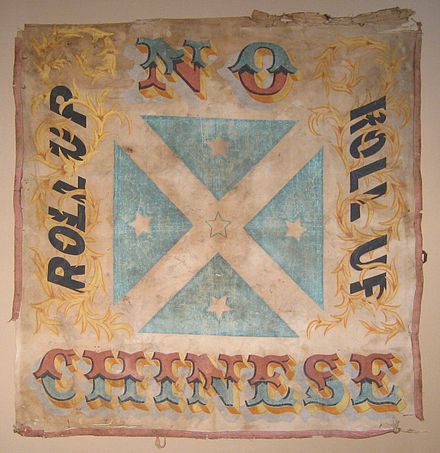Lambing Flat Riots
The Lambing Flat riots of 1861 involved significant racial tensions and violent clashes on the goldfields of New South Wales,
| Lambing Flat riots | ||
 | ||
| Anti-Chinese violence during the 1861 riots | ||
| Date | 30 June 1861 | |
| place | Lambing Flat, New South Wales, Australia | |
| causes | Racial tensions, economic competition on goldfields | |
| result | Destruction of Chinese camps, anti-Chinese laws, partial compensation | |
| side1 | European miners | |
| side2 | Chinese miners | |
| casualties | Many injured, property destroyed | |
Australia. This historical account delves into the events, focusing particularly on the
.png)
plight of the Chinese miners who sought compensation for their losses.
The discovery of gold in Lambing Flat attracted a diverse group of miners including many Chinese. However, the influx of Chinese miners led to racial tensions culminating in violent riots.
The Riots
On June 30, 1861, a large group of European miners violently attacked Chinese camps, leading to widespread injuries and the destruction of property. Subsequent anti-Chinese laws further marginalized the Chinese community.
Following the riots, the Chinese community launched a prolonged campaign for compensation. William D. Campbell was appointed to assess and award compensation, which resulted in partial payment to some claimants, although the process was marred by delays and allegations of fraud.
The Lambing Flat riots are remembered as a significant event in Australian history, exemplifying the racial tensions of the era and highlighting the struggles of the Chinese mining community.[1]
